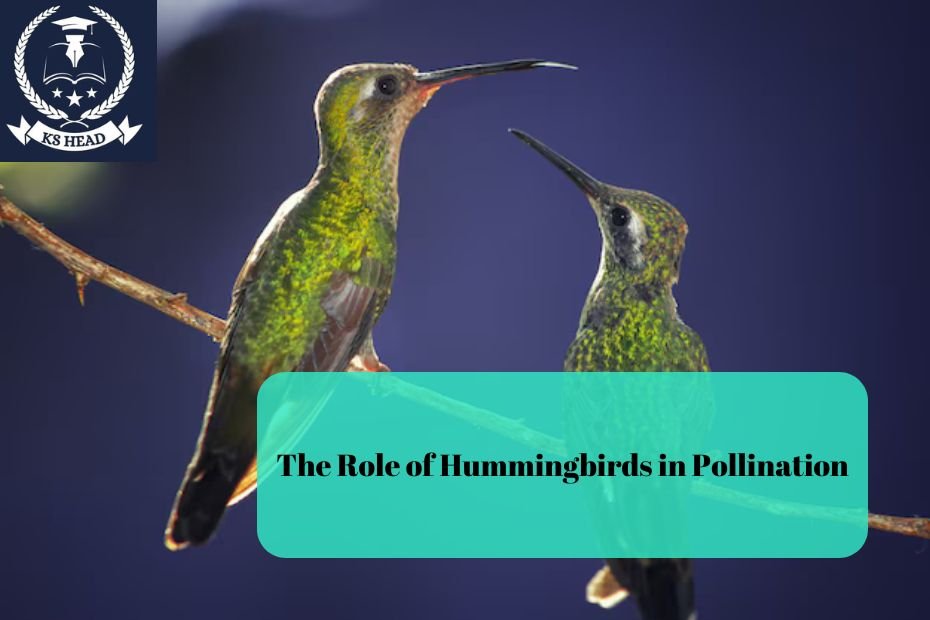Hummingbirds are remarkable creatures, known for their vibrant colors, agile flight, and distinctive humming sound created by their rapidly flapping wings. Beyond their aesthetic appeal, these tiny birds play a crucial role in the ecosystem, particularly in the process of pollination. This article will delve into the significance of hummingbirds in pollination, the mechanisms through which they contribute to plant reproduction, and the ecological implications of their actions.
Understanding Pollination
Pollination is the transfer of pollen from the male part of a flower (anther) to the female part (stigma), leading to fertilization and the production of seeds. This process is vital for the reproduction of many flowering plants, and it supports the production of fruits, vegetables, and nuts that are essential for human consumption and wildlife habitats.
Pollination can occur through various agents, including wind, water, insects, birds, and bats. Among these, birds, particularly hummingbirds, are unique pollinators due to their specialized feeding habits and physical adaptations.
The Hummingbird: A Unique Pollinator
Physical Adaptations
Hummingbirds possess several adaptations that make them particularly effective pollinators:
- Long, Extendable Beaks: Most hummingbirds have long, slender bills that allow them to reach deep into tubular flowers where nectar is often stored. This specialized feeding mechanism ensures that they can access nectar while simultaneously transferring pollen.
- Rapid Wing Beats: Hummingbirds can hover in place due to their ability to flap their wings rapidly, creating a stable platform for feeding. This hovering ability allows them to feed on flowers with precision.
- High Metabolism: Hummingbirds have one of the highest metabolic rates of any bird species, requiring them to consume large amounts of nectar daily. This high-energy lifestyle leads them to visit numerous flowers, increasing their chances of pollination.
- Color Vision: Hummingbirds have excellent color vision, enabling them to detect bright, vibrant colors that signal the presence of nectar-rich flowers. They are particularly attracted to red and orange flowers, which often indicate a high nectar content.
Feeding Behavior and Pollination
Hummingbirds are primarily nectarivorous, meaning their diet consists mainly of nectar from flowers. As they feed, they inadvertently transfer pollen from one flower to another. This mutualistic relationship benefits both the birds and the plants:
- For Hummingbirds: They receive a high-energy food source in the form of nectar, essential for sustaining their energy levels and supporting their rapid metabolism.
- For Flowers: The transfer of pollen increases the likelihood of successful fertilization, leading to seed and fruit production. Many flowering plants have evolved to depend specifically on hummingbirds for pollination.
The Pollination Process
The process of hummingbird pollination can be broken down into several stages:
- Attraction: Flowers attract hummingbirds through their vibrant colors and sweet nectar. They often have a tubular shape that allows easy access for the birds while minimizing access for other types of pollinators.
- Feeding: As hummingbirds feed on nectar, their heads brush against the anthers, collecting pollen grains.
- Transfer: When a hummingbird moves to another flower, some of the pollen collected from the first flower is transferred to the stigma of the second flower, facilitating cross-pollination.
- Fertilization: Successful pollen transfer leads to fertilization and the development of seeds, allowing the plant to reproduce.
Hummingbirds and Plant Diversity
Hummingbirds are vital for the survival of many plant species. Research indicates that certain plants rely exclusively on hummingbirds for pollination, and without these birds, those plants would struggle to reproduce. This interdependence illustrates the importance of maintaining healthy hummingbird populations to ensure biodiversity in ecosystems.
Key Plant Species Pollinated by Hummingbirds
Several plant species have evolved specific traits that cater to hummingbird pollination. These include:
- Columbine (Aquilegia): Known for its unique, tubular flowers that are rich in nectar, columbine is a favorite among hummingbirds.
- Bee Balm (Monarda): This aromatic plant produces bright red and purple flowers that attract various pollinators, especially hummingbirds.
- Hummingbird Sage (Salvia spathacea): With its tubular flowers, this sage species is particularly appealing to hummingbirds.
- Cardinal Flower (Lobelia cardinalis): The brilliant red flowers of the cardinal flower attract hummingbirds, making it a common sight in their habitats.
The Ecological Impact of Hummingbird Pollination
The role of hummingbirds in pollination extends beyond individual plant species. Their activities have broader ecological implications:
- Biodiversity Maintenance: By facilitating plant reproduction, hummingbirds contribute to the genetic diversity of plant populations, which is crucial for ecosystem resilience.
- Food Sources for Other Species: The seeds and fruits produced as a result of hummingbird pollination provide food for various animals, including insects, mammals, and birds.
- Habitat Creation: Many plants that depend on hummingbird pollination are also important for creating habitats. They provide cover and nesting sites for numerous animal species.
- Impact on Agriculture: Hummingbirds contribute to the pollination of several crops, including berries and some fruits. Their decline could negatively affect agricultural yields and food availability.
Threats to Hummingbird Populations
Despite their vital role in ecosystems, hummingbirds face several threats that jeopardize their populations and, consequently, the plants they pollinate:
- Habitat Loss: Urban development, deforestation, and agricultural expansion lead to the destruction of natural habitats. This loss reduces the availability of both flowers and nesting sites for hummingbirds.
- Climate Change: Shifts in climate patterns can affect the distribution of both hummingbirds and the flowering plants they depend on. Changes in temperature and precipitation can alter blooming times and nectar availability.
- Pesticides and Herbicides: The use of chemicals in agriculture can harm hummingbirds directly or reduce the availability of their food sources by killing off flowering plants.
- Invasive Species: Non-native plants can outcompete local flora that hummingbirds rely on for food. Additionally, invasive predators can pose a threat to hummingbird nests.
Conservation Efforts
Conserving hummingbird populations and their habitats is crucial for maintaining ecological balance. Several efforts can be taken to protect these pollinators:
- Creating Hummingbird Gardens: Planting native, hummingbird-friendly plants in gardens can provide food sources and nesting sites. Choosing a variety of flowers that bloom at different times can ensure a continuous food supply.
- Reducing Chemical Use: Avoiding pesticides and herbicides in gardens can help protect hummingbirds and other beneficial insects.
- Supporting Habitat Conservation: Organizations dedicated to preserving natural habitats can be supported through donations, volunteering, or advocacy.
- Educating Others: Raising awareness about the importance of hummingbirds in ecosystems can encourage more people to get involved in conservation efforts.
Conclusion
Hummingbirds play an indispensable role in pollination, facilitating the reproduction of countless plant species and contributing to ecosystem health. Their unique adaptations and feeding behaviors make them effective pollinators, essential for maintaining biodiversity and supporting agricultural productivity. However, threats such as habitat loss, climate change, and pesticide use endanger their populations, necessitating concerted conservation efforts. By fostering hummingbird-friendly environments and advocating for their protection, we can ensure the continued survival of these remarkable birds and the ecosystems they support.
FAQs
- What plants are best for attracting hummingbirds?
- Plants like bee balm, trumpet vine, and salvia are excellent for attracting hummingbirds due to their bright colors and high nectar content.
- How can I create a hummingbird-friendly garden?
- Plant a variety of native flowers that bloom at different times, avoid using pesticides, and provide water sources like shallow bird baths.
- Do hummingbirds migrate?
- Yes, many hummingbird species migrate seasonally. For example, the Ruby-throated Hummingbird migrates between North America and Central America.
- What is the primary diet of hummingbirds?
- Hummingbirds primarily feed on nectar from flowers, but they also consume small insects and spiders for protein.
- How do hummingbirds contribute to agriculture?
- Hummingbirds help pollinate various crops, including fruits and vegetables, which is essential for food production and biodiversity in agriculture.

